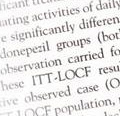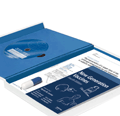Levine’s Pharmacology: Drug Actions and Reactions
Seventh Edition
- Published
- December 2004
- ISBN
- 9780203005798
- Edition
- Seventh
- Pages
- 586
- Size
- 7 x 10 in
- Format
- Hardcover
- 111 illustrations
The Heritage of Pharmacology
An acquaintance with the history of a subject frequently reveals the true nature of the subject. Tracing the growth of pharmacology, then, from its earliest beginnings will give us a sharper perspective of the scope of the field and a clearer …
Chapter Opening
| Online Chapter
| Chapter PDF (444 KB)
| PDF Plus (446 KB)
The Scope of Pharmacology
The word pharmacology is derived from the Greek pharmakon, equivalent to ‘drug’, ‘medicine’ or ‘poison’, and logia, meaning ‘study’. But the question ‘What is pharmacology?’ is only partially answered by the derivation of the term. We have seen that it is …
Chapter Opening
| Online Chapter
| Chapter PDF (166 KB)
| PDF Plus (167 KB)
How Drugs Act on the Living Organism
The eminent Canadian physician Sir William Osler made the witty comment, ‘The desire to take medicine is perhaps the greatest feature which distinguishes man from the animals.’ Whatever truth there be to this quip, it is certainly true that from the dawn …
Chapter Opening
| Online Chapter
| Chapter PDF (785 KB)
| PDF Plus (789 KB)
How Drugs Reach Their Site of Action
We have seen that a drug can produce an effect only when it is in the immediate vicinity of its site of action. With the obvious exceptions of chemicals that act like the cathartic magnesium sulfate or the plasma substitutes, drugs do not make their …
Chapter Opening
| Online Chapter
| Chapter PDF (642 KB)
| PDF Plus (646 KB)
How Drugs Reach Their Site of Action
In order for a drug to exert its characteristic effects, it must reach its site of action. This usually entails movement, since most drugs make initial contact with the body some distance away from where they act. Although the transport processes …
Chapter Opening
| Online Chapter
| Chapter PDF (817 KB)
| PDF Plus (819 KB)
How Drugs Reach Their Site of Action
Once a solute has reached the bloodstream, the principal pathway for its distribution, it usually must traverse one or more biologic barriers in order to reach its ultimate site of action. Its accessibility to this site is determined initially by its …
Chapter Opening
| Online Chapter
| Chapter PDF (567 KB)
| PDF Plus (572 KB)
How the Actions of Drugs are Terminated
The processes of absorption and distribution determine not only how but also how quickly a drug will reach its site of action; they determine the speed of onset of drug effect. If nothing else happened to a drug after it entered the body, its action would …
Chapter Opening
| Online Chapter
| Chapter PDF (759 KB)
| PDF Plus (764 KB)
How the Actions of Drugs are Terminated
The interaction between a drug and the living organism in which the body brings about a chemical change in the drug molecule is variously referred to as detoxification, drug metabolism or biotransformation. The term detoxification has historical …
Chapter Opening
| Online Chapter
| Chapter PDF (750 KB)
| PDF Plus (757 KB)
General Principles of the Quantitative Aspects of Drug Action
Up to this point we have considered some of the fundamental principles of pharmacology on rather qualitative grounds. These principles must find expression in quantitative terms as well; only then can they provide the basis for evaluation and comparison …
Chapter Opening
| Online Chapter
| Chapter PDF (666 KB)
| PDF Plus (668 KB)
General Principles of the Quantitative Aspects of Drug Action
It bears repeating that one of the most important principles of pharmacology is that the magnitude of drug effect is a function of the concentration of drug at the site where the action-effect sequence is initiated. As we have seen, the dose is a critical …
Chapter Opening
| Online Chapter
| Chapter PDF (842 KB)
| PDF Plus (846 KB)
Factors Modifying the Effects of Drugs in Individuals
Our considerations thus far have made it obvious that many factors play a role in determining the biologic effects observed when a chemical agent interacts with a living organism. The more complex the biologic system, the greater the number of variables …
Chapter Opening
| Online Chapter
| Chapter PDF (493 KB)
| PDF Plus (505 KB)
Factors Modifying the Effects of Drugs in Individuals
We have already discussed in detail how the size of the dose administered, the pharmaceutical formulation, and the route and frequency of administration modify the effects produced by a drug. Although these four factors are the most important variables …
Chapter Opening
| Online Chapter
| Chapter PDF (685 KB)
| PDF Plus (690 KB)
Drug Toxicity
Desired effect and toxic effect, when used to describe the end results of the interaction of a drug and a biologic system, are relative terms. They take on real meaning only within the context of the circumstances under which the chemical-biologic …
Chapter Opening
| Online Chapter
| Chapter PDF (383 KB)
| PDF Plus (385 KB)
How Drugs Alter Physiologic Function
As described earlier (Chapter 1), evaluation of the effects of drugs on physiologic function provides a critical tool for understanding biological mechanisms. As Claude Bernard pointed out more than a century ago, the drug ‘becomes an instrument that …
Chapter Opening
| Online Chapter
| Chapter PDF (802 KB)
| PDF Plus (806 KB)
The Pharmacologic Aspects of Drug Abuse
The earliest records of the search by humans for means to cope with the demands of the environment attest to a remarkable ingenuity in finding drugs that allay anxiety, elevate mood and, in general, furnish pleasure and satisfaction. Certainly, most …
Chapter Opening
| Online Chapter
| Chapter PDF (413 KB)
| PDF Plus (421 KB)
The Development and Evaluation of New Drugs
Until the early part of the nineteenth century, the only drugs available were crude preparations of plant, animal or mineral origin. The modern era of pharmacology was ushered in with advances in chemistry and the development of fundamental and essential …
Chapter Opening
| Online Chapter
| Chapter PDF (407 KB)
| PDF Plus (412 KB)
Drugs for Treating Gastrointestinal Tract Disorders
Gastric acidity may be reduced by either neutralization of the acid or inhibition of its secretion. Neutralization of the acid can be accomplished through the use of antacids (see below). The use of antacids provides relief from pain, but healing is …
Chapter Opening
| Online Chapter
| Chapter PDF (202 KB)
| PDF Plus (203 KB)
Drugs for Modifying Renal Function
Definition. An agent that increases the volume flow of urine. Diuretics are primarily used clinically to remove excess water from extracellular spaces (edema), which occurs with certain diseases of the heart, liver, and kidney.
Chapter Opening
| Online Chapter
| Chapter PDF (180 KB)
| PDF Plus (180 KB)
Drugs for Treating Infections and Cancer
Chemotherapy deals with the treatment of disease by chemical agents that can produce a toxic effect upon the disease-causing organism without producing undue harm to the host. Drugs used in the treatment of parasitic (microbial, viral, fungal, helmintic, …
Chapter Opening
| Online Chapter
| Chapter PDF (186 KB)
| PDF Plus (187 KB)
Drugs for Treating Hypertension
General Considerations. Elevation of blood pressure, referred to as hypertension, is a common phenomenon, with an estimated 50 million afflicted individuals in the US population and 1 billion worldwide. Hypertension has been definitively established as a …
Chapter Opening
| Online Chapter
| Chapter PDF (136 KB)
| PDF Plus (136 KB)
Drugs for Reducing Pain and Consciousness
Remember that pain has this most excellent quality: if prolonged it cannot be severe, and if severe it cannot be prolonged.
Chapter Opening
| Online Chapter
| Chapter PDF (229 KB)
| PDF Plus (230 KB)
Drugs for Producing Sedation and Sleep
A sedative is a drug that produces a mild degree of nonselective depression of the central nervous system (CNS) by decreasing the response of an individual to all sensory modalities.
Chapter Opening
| Online Chapter
| Chapter PDF (158 KB)
| PDF Plus (159 KB)
Drugs for Treating Mood Disorders
The use of drugs to treat psychiatric disorders became widespread following clinical studies in the mid-1950s with chlorpromazine which revealed its value in the treatment of psychotic states. It is estimated that about 20% of the prescriptions written in …
Chapter Opening
| Online Chapter
| Chapter PDF (176 KB)
| PDF Plus (177 KB)
Drugs for Stimulating the Central Nervous System
General Considerations A great many agents can stimulate the central nervous system (CNS). Some of these produce central system stimulation as an adverse side-effect, but others produce this effect as their most prominent action. The latter group are …
Chapter Opening
| Online Chapter
| Chapter PDF (147 KB)
| PDF Plus (148 KB)
A molecule, ion or other entity that acts as a proton or hydrogen ion donor; a substance that ionizes in solution to form hydrogen ions; any substance that contains hydrogen capable of being replaced by basic radicals (cf. base).
Chapter Opening
| Chapter PDF (236 KB)
| PDF Plus (236 KB)







